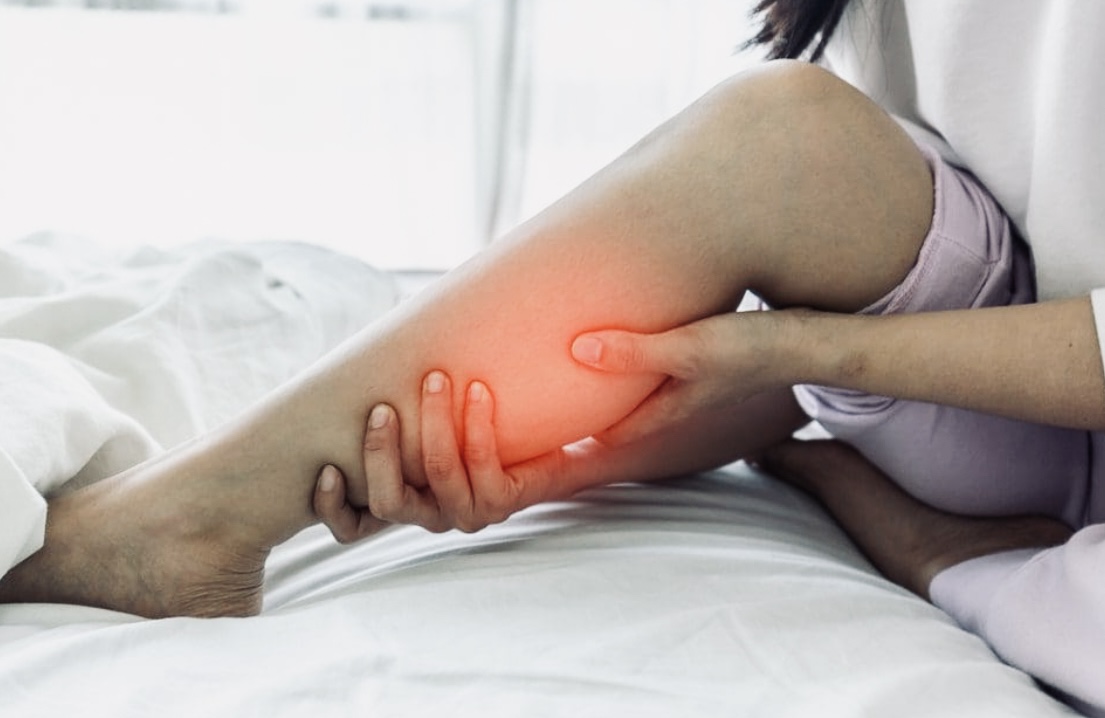Key Questions Addressed in the Article:
- What are the common causes of leg pain and how can they impact daily life?;
- How do conditions like bursitis, shin splints, ITBS, sciatica, and stress fractures develop, and what symptoms do they present?;
- What are the proven methods for relieving leg pain and discomfort?;
- How can one prevent leg pain from occurring or worsening, especially in the context of an active lifestyle?;
- What role do podiatrists play in diagnosing and treating leg pain, and why is their advice crucial?;
- What are the recommended treatment strategies for common leg pain causes such as bursitis, shin splints, ITBS, sciatica, and stress fractures?;
- How can preventive measures, including exercises and orthotics, contribute to the overall health and well-being of the legs and feet?
People often overlook the significance of their legs, only realizing their crucial role when pain emerges, making everyday tasks like walking a challenge. Legs, the pillars of our mobility, harbor muscles that not only facilitate foot movement but also ensure stability. Various factors, including heightened physical activity or a shift in shoe wear, can exert additional strain on these muscles, leading to overuse, inflammation, and discomfort. This leg pain may manifest in diverse forms—be it a constant, recurring, or sporadic sensation, characterized by aches, sharp stings, or tingling, occasionally accompanied by swelling, affecting the leg wholly or in specific regions.
The discomfort in one’s legs often originates from injuries linked to physical exertions, such as shin splints or stress fractures. These conditions, while painful, can lead to severe complications if not addressed properly. Consulting with podiatrists, especially those based in Brisbane, for various treatment methodologies is advisable for those suffering from such ailments.
Common Causes of Leg Pain
Bursitis
This condition arises when the bursae, small fluid-filled sacs that cushion bones, tendons, and muscles near joints, experience heightened stress or irritation, leading to inflammation, enlargement, and pain. Commonly affected areas include the hip, knee, elbow, and shoulder. Frequent repetitive motions or sudden increases in activity can exacerbate this condition. Symptoms often include joint pain and stiffness, with pain worsening with movement or pressure. Early treatment is crucial to prevent the condition from becoming chronic, involving rest, ice, and anti-inflammatory medications. In severe cases, corticosteroid injections or surgery may be necessary.
Shin Splints
Pain along the shins, particularly in the lower legs, suggests the presence of shin splints, a discomfort resulting from overexertion. This condition is common among runners, dancers, and military recruits, often triggered by sudden changes in physical activity intensity. The pain, typically on the inner edge of the shinbone, can range from sharp and razor-like to a dull ache. Prevention includes wearing appropriate footwear, gradually increasing activity levels, and incorporating strength training exercises for the lower legs. Treatment focuses on rest, ice, and over-the-counter pain relievers, with a gradual return to activity.
Iliotibial Band Syndrome (ITBS)
Overuse or excessive loading of the band running from the hip to the knee along the thigh’s exterior may lead to ITB Syndrome, a painful condition. ITBS is particularly prevalent among cyclists and runners, manifesting as sharp, burning pain on the outside of the knee. Contributing factors include inadequate warm-up or cool-down, running on uneven surfaces, and biomechanical irregularities. Treatment strategies encompass rest, ice, compression, elevation (RICE), stretching, and strengthening exercises. In persistent cases, physical therapy or corticosteroid injections may be recommended.
Sciatica
Representing a broad spectrum of lower back and leg pain, sciatica particularly affects the buttocks, with symptoms potentially extending from the lower back to the feet. This condition occurs when the sciatic nerve is compressed or irritated, often by a herniated disk or bone spur. Symptoms include pain, numbness, and tingling along the nerve’s pathway. Treatment options vary, focusing on pain relief and addressing the underlying cause, potentially involving physical therapy, medication, and in severe cases, surgery. Exercises to strengthen the back muscles and improve flexibility can also help manage and prevent sciatica.
Stress Fractures
These are minute cracks in the bone that develop gradually from overuse or repetitive activity, hindering the bone’s natural healing process. Stress fractures commonly affect athletes, military recruits, and individuals engaging in high-impact sports such as running or basketball. Early signs include pinpoint pain, swelling, and tenderness in the affected area, which may worsen with activity and improve with rest. Preventive measures include using proper equipment, varying training routines, and incorporating strength and flexibility exercises. Treatment primarily involves rest and avoiding high-impact activities until the bone heals fully, which may take several weeks to months.
Overall
In conclusion, acknowledging the vital role our legs play in our daily lives is essential, especially when pain becomes a barrier to simple activities. The myriad causes of leg pain, ranging from bursitis to stress fractures, highlight the complexity of leg health and the importance of seeking appropriate medical advice. Podiatrists serve as invaluable resources for diagnosing and treating leg pain, ensuring that individuals can return to their daily routines without discomfort. Moreover, preventive measures, such as strengthening exercises and orthotics, can significantly contribute to the overall health of our legs and feet. As we move forward, let’s remember to care for our legs with the same attentiveness we afford other aspects of our health, ensuring a strong foundation for mobility and a pain-free life.

